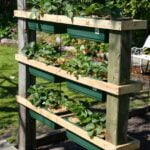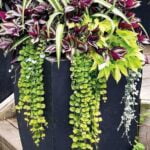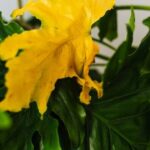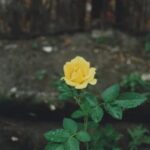Are you looking for landscape ideas that incorporate the stunning Red Twig Dogwood? Look no further. Whether you are a seasoned gardener or just starting out, this versatile and beautiful plant can add a pop of color and interest to any outdoor space. In this article, we will explore the many ways in which you can use Red Twig Dogwood to enhance your landscaping.
Red Twig Dogwood, also known as Cornus sericea, is a native North American shrub that is prized for its vibrant red branches. This plant is popular for its stunning winter appeal when its fiery red twigs stand out against the snow. But Red Twig Dogwood is not just a one-season wonder – it offers year-round beauty and versatility in the garden.
In this comprehensive guide, we will discuss the benefits of using Red Twig Dogwood in landscaping, best practices for planting and caring for this plant, design ideas for incorporating it in landscapes, seasonal maintenance tips, varieties and colors available, companion plants that pair well with it, and real-life success stories of stunning Red Twig Dogwood landscapes.
Whether you’re looking to add visual interest to your garden or create an eye-catching focal point in your landscape design, Red Twig Dogwood has something to offer for everyone.
The Benefits of Using Red Twig Dogwood in Landscaping
Red twig dogwood, also known as Cornus sericea, is a versatile and beautiful plant that can bring a pop of color and interest to any landscape. This deciduous shrub is known for its bright red stems, especially in the winter months when it stands out against the snow. In addition to its striking appearance, red twig dogwood offers numerous benefits when used in landscaping.
Year-Round Interest
One of the key benefits of using red twig dogwood in landscaping is its year-round interest. While the vibrant red stems are most noticeable in the winter, this plant also boasts white flowers in the spring, followed by small white berries that attract birds in the summer and fall. The changing colors and textures make red twig dogwood a dynamic addition to any landscape regardless of the season.
Erosion Control and Soil Stabilization
Another advantage of incorporating red twig dogwood into landscaping is its ability to help control erosion and stabilize soil. Due to its dense root system, this plant can be an effective tool for preventing soil erosion on slopes or along waterways. The extensive root network helps hold soil in place, making it a valuable asset for landscapes that require erosion control measures.
Wildlife Habitat
Red twig dogwood provides more than just aesthetic appeal-it also serves as a valuable habitat for wildlife. The flowers and berries attract pollinators such as bees and butterflies, while also providing a food source for birds during the colder months. By including this plant in your landscape design, you can create a welcoming environment for various forms of wildlife while enjoying its visual appeal throughout the year.
Best Practices for Planting Red Twig Dogwood
When it comes to planting Red Twig Dogwood in your landscape, there are several best practices that can ensure the success and health of these beautiful plants. First and foremost, it’s important to choose the right location for your Red Twig Dogwood. These plants thrive in well-drained soil and prefer a mix of sun and shade, so finding a spot that meets these requirements is crucial.
When planting Red Twig Dogwood, it’s also important to pay attention to spacing. Give each plant enough room to grow and spread out, as crowding can lead to poor air circulation and potential disease or pest issues. Additionally, make sure to plant them at the appropriate depth and water them thoroughly after planting to help establish their roots.
In terms of design, consider using Red Twig Dogwood as a focal point in your landscape. Whether in a mixed border or as a standalone feature, their vibrant red branches can add a pop of color and interest throughout the year. They also work well when planted en masse for a stunning visual impact, especially during the winter months when their colorful stems stand out against the white snow.
By following these best practices for planting Red Twig Dogwood, you can create a thriving and visually striking landscape that will be enjoyed for years to come. Whether used as hedges, accents or specimen plants, these versatile shrubs can bring beauty and interest to any outdoor space.
Design Ideas for Incorporating Red Twig Dogwood in Landscapes
Red twig dogwood, with its vibrant red branches, can be a stunning addition to any landscape. Whether you want to create a formal or informal look, there are various design ideas for incorporating red twig dogwood into your outdoor space.
To make the most of this beautiful shrub, here are some design ideas to consider:
- Use red twig dogwood as a focal point in your garden or landscape design.
- Plant red twig dogwood in clusters along a border or walkway for a striking visual effect.
- Create contrast by planting red twig dogwood against a backdrop of evergreen shrubs or alongside plants with contrasting foliage colors.
- Incorporate lighting to showcase the bright red branches during the evening hours.
- Utilize red twig dogwood in winter-themed landscapes for its eye-catching color and texture during the colder months.
These design ideas can help you make the most of red twig dogwood’s unique aesthetic qualities and bring interest and beauty to your outdoor space throughout the year. Whether you opt for a formal or naturalistic planting scheme, this versatile shrub is sure to make an impact in any landscape.
Seasonal Maintenance Tips for Red Twig Dogwood
Red Twig Dogwood is a popular choice for landscapers and gardeners due to its vibrant red stems that add color and interest to the winter landscape. However, in order to keep Red Twig Dogwood healthy and looking its best, it’s important to provide proper seasonal maintenance. During the spring and summer months, regular pruning and watering are essential for promoting healthy growth and vibrant stem color.
Pruning should be done in early spring before new growth begins. This will help maintain the plant’s shape and encourage new growth. Additionally, removing older stems can also help promote new growth and enhance the red color of the younger stems. Regular watering is important during dry periods, especially for newly planted Red Twig Dogwood. Deep watering once or twice a week is recommended, ensuring that the soil is thoroughly moistened.
During the fall season, it’s important to prepare Red Twig Dogwood for the colder months ahead. Applying a layer of mulch around the base of the plant will help insulate the roots and protect them from freezing temperatures. It’s also a good time to check for any signs of disease or pest infestations, as addressing these issues before winter sets in can prevent more serious problems in the future.
| Seasonal Maintenance Tips | Red Twig Dogwood |
|---|---|
| Pruning | Regular pruning helps maintain shape and encourages new growth. |
| Watering | Deep watering once or twice a week during dry periods. |
| Fall Preparation | Applying mulch around the base of the plant to insulate roots. |
Red Twig Dogwood Varieties and Colors
Varieties of Red Twig Dogwood
There are several varieties of red twig dogwood that can be used in landscaping. The popular “Arctic Fire” variety is known for its compact size and vibrant red stems, making it a great choice for smaller spaces.
“Isanti” is another variety with deep red stems and a more narrow growth habit, perfect for creating vertical interest in the landscape. “Winter Flame” is prized for its bright yellow stems that turn red in winter, adding a pop of color to the garden.
Colors of Red Twig Dogwood
The most common color associated with red twig dogwood is, as the name implies, red. However, there are other colors available as well. Some varieties exhibit bright yellow stems in the winter months, while others have striking multi-colored stems with hues of red, orange, and yellow. These variations in color make red twig dogwood a versatile choice for adding visual interest to any landscape.
Combining Varieties and Colors
When incorporating red twig dogwood into your landscape design, consider combining different varieties and colors for added dimension and contrast. Mixing “Arctic Fire” with “Winter Flame” can create a stunning display of both red and yellow stems, while planting “Ivory Halo,” a variety with variegated leaves, alongside the traditional red-stemmed dogwoods can add interest even when the plants are not in their colorful stage.
Experimenting with different combinations will allow you to create unique and eye-catching landscapes that stand out throughout the year.
Companion Plants for Red Twig Dogwood
When it comes to planting red twig dogwood in your landscape, it’s important to consider the companion plants that will complement its vibrant red stems. Choosing the right plants to grow alongside your red twig dogwood can enhance the aesthetics of your garden and create a harmonious and visually appealing outdoor space.
Here are some popular companion plants that pair well with red twig dogwood:
- Japanese Forest Grass (Hakonechloa macra): This ornamental grass features beautiful arching leaves that provide a soft contrast to the bold, upright stems of the red twig dogwood.
- Ornamental Berries: Plants like winterberry (Ilex verticillata) or beautyberry (Callicarpa) can add pops of color to your landscape during the fall and winter months, complementing the red twigs of the dogwood.
- Hostas: The lush foliage of hostas serves as a lovely backdrop for the striking red stems of the dogwood, creating a dynamic visual effect in shaded areas.
Additionally, incorporating perennial flowers such as astilbe, ferns, and heuchera can bring texture and variety to your garden while allowing the red twig dogwood to remain the focal point of interest.
By selecting complementary companion plants for your red twig dogwood, you can create a cohesive and balanced landscape design that celebrates the natural beauty of each individual plant while elevating the overall appearance of your outdoor space. These combinations can be used in borders, mixed beds, or naturalized areas to great effect.
Success Stories
Incorporating Red Twig Dogwood into a landscape design can truly transform an outdoor space, adding beauty and interest year-round. The vibrant red stems of this plant can bring a pop of color to any garden and the benefits of using Red Twig Dogwood in landscaping are numerous. With its versatility, hardiness, and aesthetic appeal, it’s no wonder that many landscapers and gardeners have successfully incorporated this plant into their projects.
One of the best things about using Red Twig Dogwood in landscaping is its ability to thrive with minimal maintenance. Whether used as a focal point in a winter garden or as part of a mixed border, this plant’s stunning red stems add visual interest even during the coldest months. Its adaptability to various soil types and resistance to disease make it a reliable choice for any landscape design.
Real life success stories showcase how stunning Red Twig Dogwood landscapes can be. From simple residential gardens to expansive commercial properties, the versatility and visual impact of this plant are undeniable.
When paired with complementary companion plants and strategically placed within the landscape, Red Twig Dogwood can create breathtaking scenes throughout the year. So whether you’re looking to add winter interest to your garden or enhance your landscape design with vibrant pops of color, Red Twig Dogwood is definitely worth considering.

Welcome to my gardening blog! I am passionate about plants and enjoy sharing my knowledge and experiences with others. In this blog, I will write about everything related to gardening, from tips on how to get started to updates on my own garden projects.





